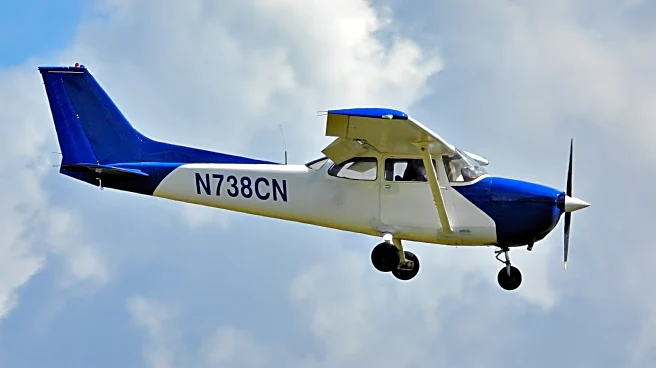Today, many military aircraft can break the sound barrier to enter supersonic flight. Certain commercial models can as well, including the Concorde, which is famous for its record-breaking flights. As a result, we have a relatively good understanding of the side effects of faster-than-sound flight, including sonic boom.
A sonic boom is the result of air molecules being pressurized and forced out of the way as an aircraft speeds along. This produces a shock wave, which makes a loud boom that can be heard
by witnesses on the ground. The loudest sonic boom ever emitted goes to the Republic Aviation Corporation's XF-84H, also known as the "Thunderscreech." Designated by the Guinness World Records as the loudest aircraft, the XF-84H released sonic booms from its spinning propellers that traveled at the speed of Mach 1.18 — or about 900 mph.
However, the loudest sonic boom isn't necessarily the strongest. The measurement needed to determine a sonic boom's strength is its overpressure, defined by NASA as "the amount of the increase over the normal atmospheric pressure which surrounds us (2,116 psf/14.7 psi)." In relation to this measurement, the F-4 Phantom produced the strongest recorded sonic boom in 1967.
Read more: 10 Largest Air Forces In The World, Ranked By Military Aircraft Numbers
The Strongest Sonic Boom Was An Air Force Experiment
In standard flight conditions, the F-4 Phantom's strongest sonic boom reaches about 21 pounds per square foot. However, the Air Force was specifically pushing the aircraft to its limit to determine how powerful a boom it could produce. The F-4 phantom, a fast fighter jet retired in the '90s, hit a remarkable overpressure of 144 pounds per square foot while flying approximately 100 feet off the ground. This was 20 years after Chuck Yeager first broke the sound barrier.
In the years after, armies began exploring sonic booms as a potential weapon that could cause physiological and psychological effects. It wasn't just a matter of potential weapons development, though. Officials were also considering the ramifications of flights that broke the sound barrier for the commercial sector and civilians. After all, regular supersonic flight would be a very dangerous prospect if sonic booms posed a threat to buildings or people in the vicinity. That's why it's crucial to understand how dangerous various amounts of overpressure are.
Sonic Booms Can Cause Damage But It's Not Common
Supersonic flight has caused damaged before. In October 1953, the Pentagon was performing a showcase of the all-new F-100 Super Sabre (pictured here). As the pilot passed the crowd, six plate glass windows and 27 smaller panes in one of the airport's buildings blew out. Importantly, no one was hurt.
While it takes at least 16 pounds per square foot of overpressure to significantly damage buildings, a sonic boom would have to be much stronger to pose a physical threat to humans. NASA estimates that around 720 pounds of overpressure would be required to injure a person's eardrums — which is about five times the amount of overpressure generated by the F-4 Phantom's record-breaking run. Still, the potential for damage is there: Rapid pressure changes associated with an overpressure of 2,160 pounds per square foot or more could even damage an onlooker's lungs.
However, most supersonic flights don't come close to this, and their sonic booms are unlikely to cause notable damage to property or people. Nevertheless, the potential for disruption from the sound is one major reason why supersonic flights are carefully regulated and cannot be performed in particular places. According to the Federal Aviation Administration, "all civil aircraft flights are prohibited from operating above Mach 1 speeds over land in the United States." It recognizes, however, that this could be necessary in certain situations, in which special permission may be granted upon request.
Want the latest in tech and auto trends? Subscribe to our free newsletter for the latest headlines, expert guides, and how-to tips, one email at a time.
Read the original article on SlashGear.











